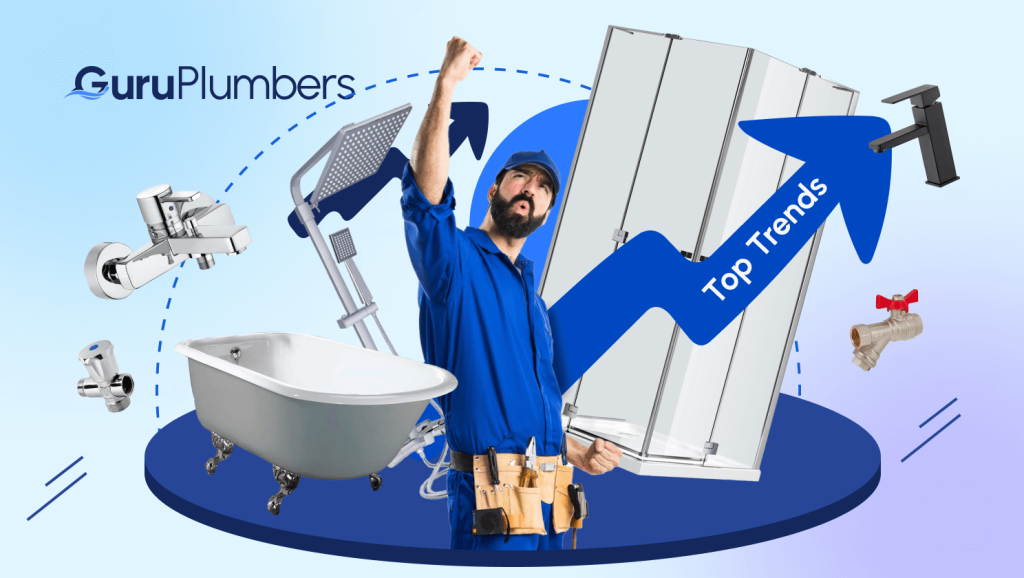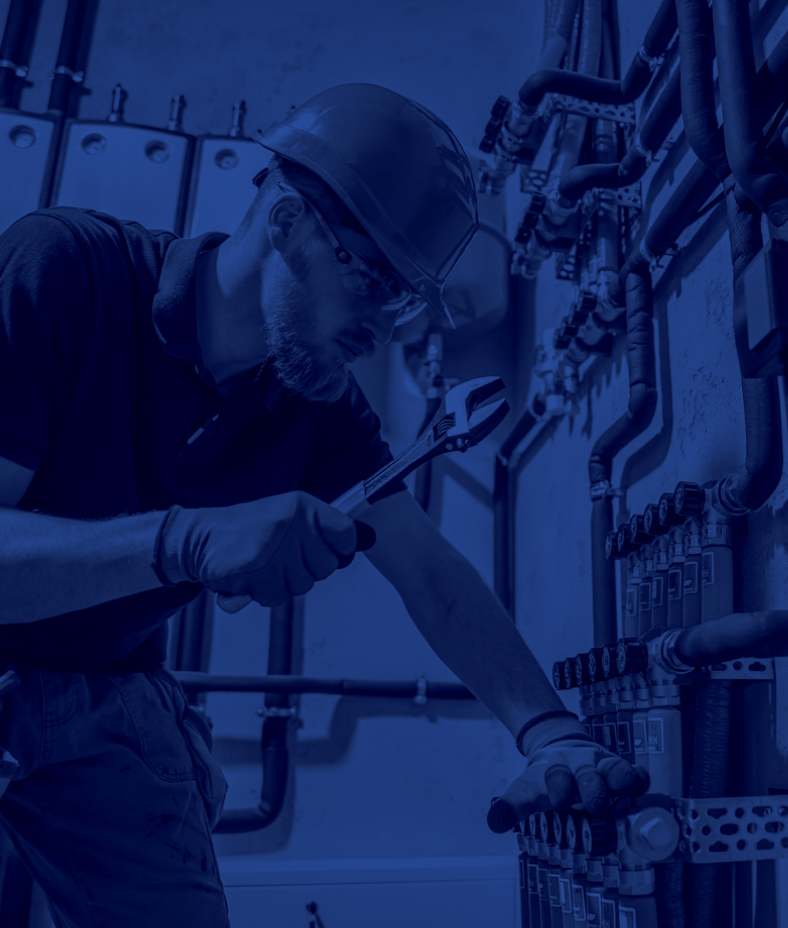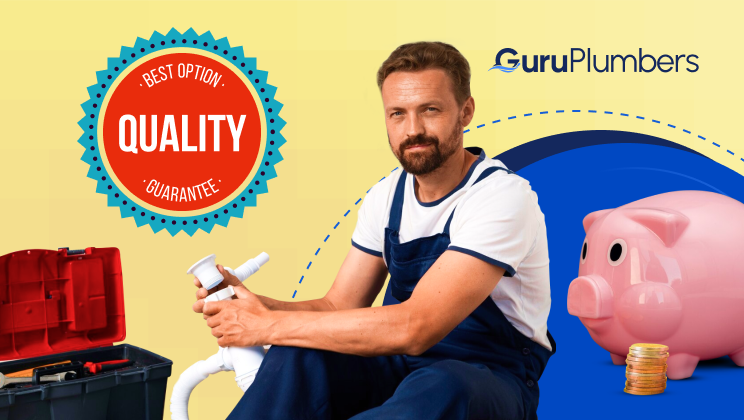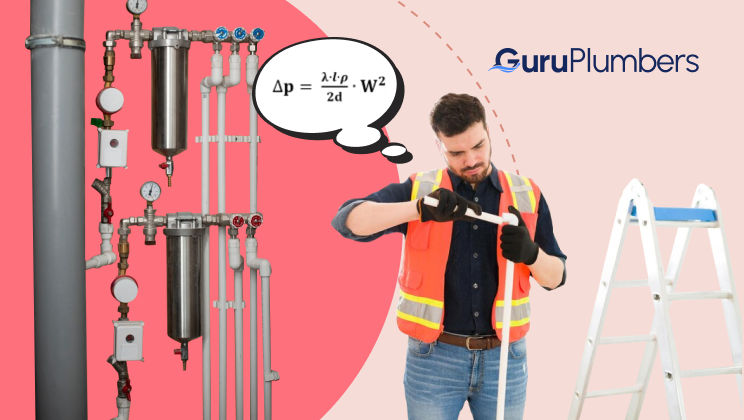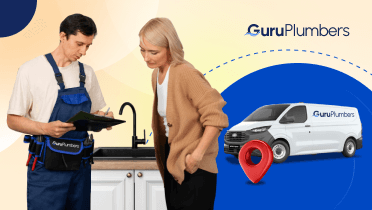Plumbing technology has come a long way from ancient aqueducts to modern, sophisticated systems. Over the years, innovations have drastically improved efficiency, safety, and convenience. Staying updated with the latest trends in plumbing technology is crucial for both professionals and homeowners to ensure optimal performance, sustainability, and cost savings.
Smart Plumbing Systems
Smart plumbing systems integrate technology to manage water usage more efficiently and conveniently. Smartphones and voice commands can control smart faucets, showers, and toilets.
Benefits
- Water Conservation: Automated shut-off and precise control reduce water waste.
- Energy Efficiency: Smart systems optimize water heating and reduce energy consumption.
- Convenience: Remote control and automation enhance user experience and maintenance.
Examples of Popular Smart Plumbing Products
- Moen U by Moen Smart Shower: Offers personalized presets and voice control.
- Kohler Veil Intelligent Toilet: Features a touchless flush, bidet functionality, and heated seat.
- Delta VoiceIQ Faucet: Enables voice-activated control and custom commands via smart assistants.
Leak Detection Technology
Early leak detection is critical to prevent water damage, mold growth, and high utility bills. Addressing leaks promptly saves money and conserves water.
Types of Leak Detection Systems
- Sensors: Placed near potential leak sources, these devices alert users to the presence of water.
- Smart Water Meters: Monitor water flow in real-time, detecting irregularities that suggest leaks.
How They Work and Their Benefits
- Sensors: These devices detect moisture and trigger alarms or notifications, allowing for immediate action.
- Benefits: Quick response to leaks, preventing extensive damage.
- Smart Water Meters: Analyze water usage patterns to identify anomalies.
- Benefits: Continuous monitoring, detailed water usage data, early detection of even small leaks.
Tankless Water Heaters
Water is heated directly as it flows through tankless water heaters, eliminating the need for storage tanks.
Advantages Over Traditional Water Heaters
- Energy Efficiency: Only heats water when needed, reducing energy consumption.
- Space Saving: Small dimensions free up space in homes or businesses.
Popular Models and Their Features
- Rinnai RUC98iN: High flow rate, energy-efficient, Wi-Fi capability.
- EcoSmart ECO 27: Digital temperature control, compact, ideal for small to medium homes.
- Stiebel Eltron Tempra Plus 24: Advanced flow control, silent operation, easy installation.
Greywater Recycling Systems
Greywater recycling systems collect and reuse water from sinks, showers, and washing machines. This reduces the demand for fresh water and decreases wastewater discharge, promoting sustainability and conservation.
How Greywater Systems Work These systems filter and treat greywater, making it suitable for non-potable uses like irrigation and toilet flushing. Basic steps include:
- Collection: Capturing greywater from household drains.
- Filtration: Removing particles and contaminants.
- Treatment: Disinfecting the water for safe reuse.
- Distribution: Pumping treated greywater to designated fixtures or irrigation systems.
Applications in Residential and Commercial Settings
- Residential: Used for garden irrigation, toilet flushing, and landscape watering, reducing household water bills.
- Commercial: Implemented in hotels, office buildings, and public facilities for landscaping and toilet flushing, enhancing water efficiency on a larger scale.
Touchless Fixtures
The demand for touchless fixtures has surged due to heightened awareness of hygiene and the need for water conservation. These fixtures help minimize contact with surfaces, reducing the spread of germs.
Hygiene and Water-Saving Benefits
- Hygiene: Touchless operation reduces the risk of cross-contamination, promoting a cleaner environment.
- Water-Saving: Sensors ensure water flows only when needed, significantly reducing wastage.
Notable Brands and Products
- Kohler Sensate Touchless Faucet: Motion-sensing technology, easy installation, and water-saving features.
- Moen MotionSense Faucet: Hands-free operation, customizable settings, and energy efficiency.
- TOTO Neorest NX2 Toilet: Touchless flush, self-cleaning bowl, and integrated bidet functionality.
Water Filtration and Softening Systems
Ensuring high water quality is crucial for health, appliance longevity, and overall well-being. Contaminants in water can cause health issues and damage plumbing systems.
Types of Filtration and Softening Technologies
- Filtration Technologies:
- Activated Carbon Filters: Remove chlorine, odors, and organic compounds.
- Reverse Osmosis Systems: Get rid of heavy metals and pathogens by removing them through reverse osmosis.
- Ultraviolet (UV) Purifiers: Use UV light to kill bacteria and viruses.
- Softening Technologies:
- Ion Exchange Softeners: Salt or potassium ions are substituted for calcium and magnesium ions to reduce hardness.
- Salt-Free Water Softeners: Use template-assisted crystallization to prevent scale formation without adding salt.
Key Benefits and Popular Systems
- Benefits: Improved taste and odor, reduced health risks, extended appliance life, and prevention of scale buildup.
- Popular Systems:
- Brita Pitcher Filters: Affordable and easy-to-use carbon filters for basic filtration.
- APEC Top Tier Reverse Osmosis System: Comprehensive filtration for removing a wide range of contaminants.
- Pelican Water Systems Salt-Free Softener: Eco-friendly option for preventing scale without using salt.
Advanced Pipe Materials
Modern plumbing has evolved from using traditional materials like copper and galvanized steel to advanced materials such as PEX (cross-linked polyethylene) and CPVC (chlorinated polyvinyl chloride).
Benefits of Modern Materials
- Durability: Resistant to corrosion, scale, and chlorine, extending the lifespan of the pipes.
- Flexibility: Easier to install, especially in tight spaces, reducing labor costs and installation time.
- Cost-Effectiveness: Generally more affordable than traditional materials, both in terms of material cost and installation.
Comparison with Traditional Materials
- PEX:
- Pros: Highly flexible, freeze-resistant, easy to install.
- Cons: Sensitive to UV light, not suitable for outdoor use.
- CPVC:
- Pros: Can handle higher temperatures, resistant to corrosion.
- Cons: Less flexible than PEX, can become brittle over time.
- Copper (Traditional):
- Pros: Long-lasting, can handle high pressure and temperature.
- Cons: Expensive, prone to corrosion and theft, labor-intensive installation.
- Galvanized Steel (Traditional):
- Pros: Durable, can handle high pressure.
- Cons: Heavy, prone to rust and corrosion, difficult to work with.
Energy-Efficient Plumbing Fixtures
Energy-efficient plumbing fixtures are designed to minimize water and energy usage, promoting conservation and cost savings. These fixtures help reduce the overall demand for water and the energy required to heat it.
Examples of Energy-Efficient Fixtures
- Low-Flow Faucets: Designed to use less water per minute without sacrificing performance.
- Dual-Flush Toilets: Allow users to flush liquid waste with a lower volume and solid waste with a higher volume of water.
Impact on Utility Bills and the Environment
- Utility Bills: Reduced water and energy usage directly lower household utility costs.
- Environment: Conserving water reduces the strain on local water supplies and decreases the energy needed for water treatment and heating, leading to lower greenhouse gas emissions.
Sustainable and Eco-Friendly Plumbing
Trends in Sustainable Plumbing Practices
- Water-Efficient Fixtures: Increasing adoption of fixtures that use less water.
- Rainwater Harvesting Systems: Capturing and using rainwater for non-potable applications.
- Greywater Recycling: Irrigating and flushing with water reused from sinks and showers.
Use of Recycled Materials and Eco-Friendly Products
- Recycled Materials: Pipes and fixtures made from recycled metals and plastics reduce waste and resource consumption.
- Eco-Friendly Products: Biodegradable and non-toxic materials in plumbing products minimize environmental impact.
Impact on Green Building Certifications (LEED, etc.)
- LEED Certification: Incorporating sustainable plumbing practices contributes to achieving LEED certification, which recognizes buildings that meet high environmental performance standards.
- Benefits: LEED-certified buildings enjoy lower operating costs, higher property values, and enhanced marketability due to their sustainable design and reduced environmental footprint.
3D Printing in Plumbing
3D printing, or additive manufacturing, creates objects layer by layer from digital models, offering precise and customizable production.
Applications in Plumbing
- Custom Parts: Rapid production of unique or hard-to-find plumbing components.
- Fixtures: Creation of bespoke fixtures tailored to specific design requirements or aesthetic preferences.
- Prototyping: Developing and testing new plumbing products quickly and cost-effectively.
Future Potential and Benefits
- Innovation: Enables rapid prototyping and testing of new designs, accelerating innovation.
- Cost Savings: Reduces costs associated with traditional manufacturing and inventory management.
- Customization: Allows for highly customizable solutions, catering to unique project needs and specifications.
Plumbing Software and Apps
Plumbing software and apps streamline various aspects of plumbing, including system design, project management, and maintenance tracking.
Popular Plumbing Apps and Their Features
- AutoCAD: Provides tools for detailed plumbing system design and layout.
- ServiceTitan: Manages scheduling, dispatching, invoicing, and customer relationship management for plumbing businesses.
- Plumbing Formulator: Offers a comprehensive database of plumbing formulas and calculators for quick on-site problem-solving.
Benefits for Professionals and Homeowners
- For Professionals:
- Efficiency: Streamlines project planning, reduces errors, and improves job accuracy.
- Management: Enhances business management through better scheduling, resource allocation, and customer service.
- For Homeowners:
- DIY Assistance: Provides access to troubleshooting guides and maintenance tips.
- Convenience: Simplifies communication with professionals and tracking of plumbing issues and repairs.
Final Thoughts
Modern plumbing technology is advancing rapidly with key trends such as smart plumbing systems, leak detection technology, tankless water heaters, greywater recycling systems, touchless fixtures, water filtration and softening systems, advanced pipe materials, energy-efficient fixtures, sustainable plumbing practices, 3D printing, and plumbing software and apps.
Adopting these modern technologies is essential for improving efficiency, reducing environmental impact, enhancing convenience, and cutting costs. They offer significant benefits for both homeowners and professionals, ensuring systems are more reliable, sustainable, and easier to maintain.
The future of plumbing technology promises even greater advancements in efficiency, customization, and sustainability. Embracing these innovations will be crucial for meeting the growing demands for resource conservation, eco-friendly building practices, and advanced system management. Staying updated with these trends will ensure optimal performance and long-term benefits in the plumbing industry.
